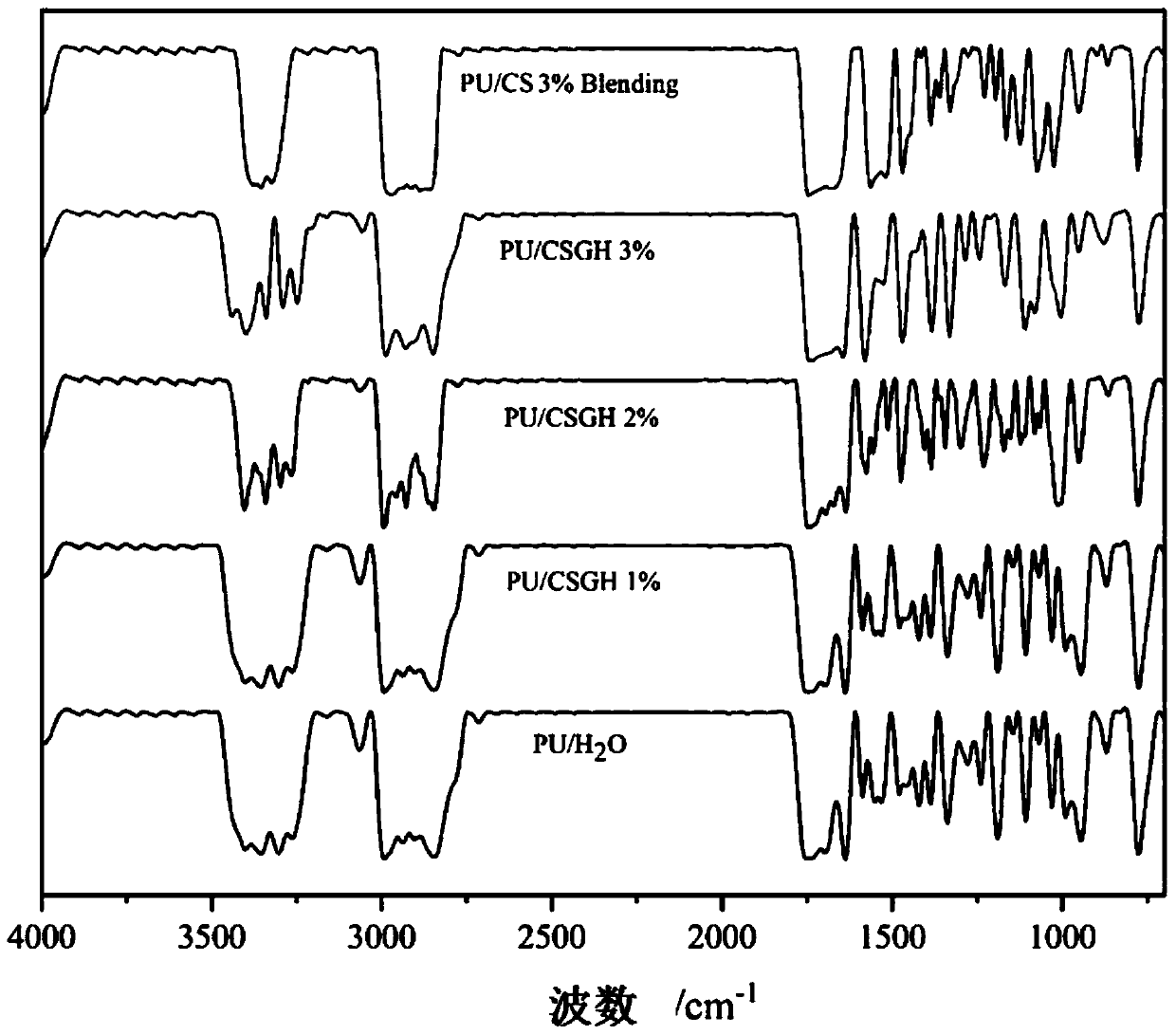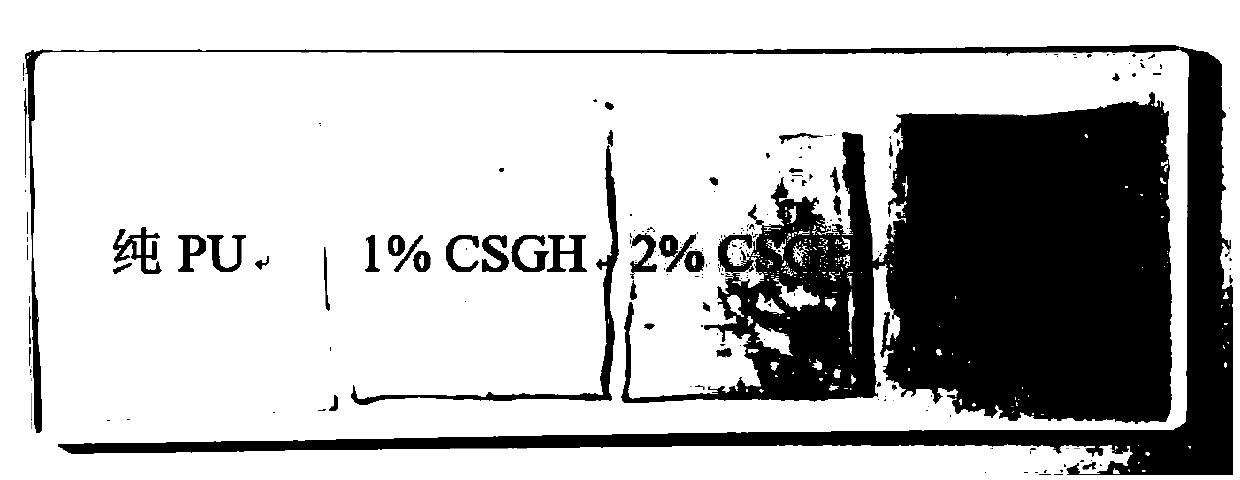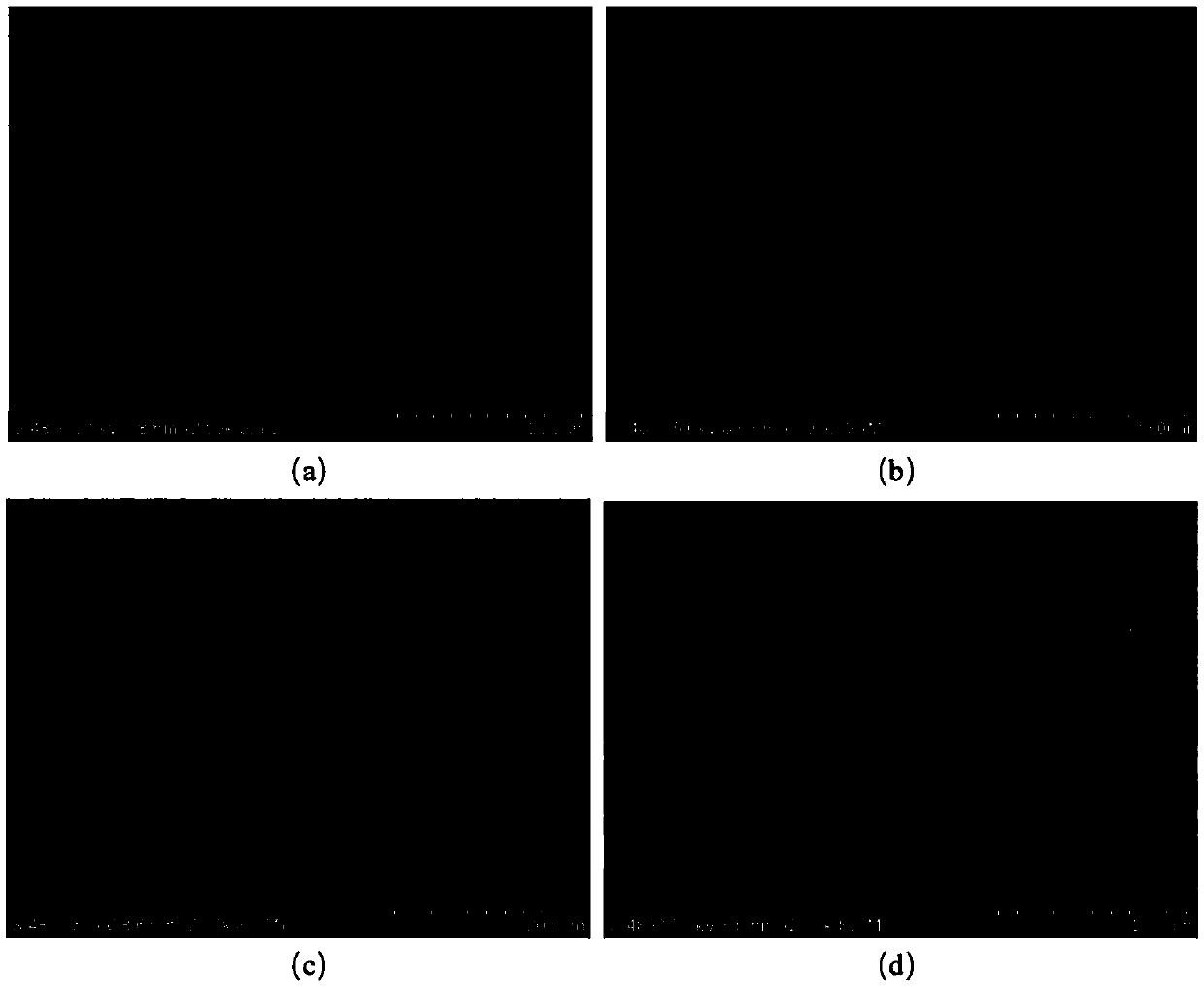Application of chitosan guanidine cationic waterborne polyurethane in preparation of antibacterial coating layer
A technology of cationic polyurethane and water-based polyurethane, applied in application, coating, anti-fouling/underwater coating, etc., can solve problems such as human injury, atmospheric damage, violation of the concept of sustainable development, etc., and achieve reduction of VOC emissions and operation methods Simple and easy to implement, reducing the impact on the environment and human health
- Summary
- Abstract
- Description
- Claims
- Application Information
AI Technical Summary
Problems solved by technology
Method used
Image
Examples
Embodiment 1
[0049] (1) Take poly-1,4-butylene adipate diol 600 in a four-necked flask, heat the oil bath to 90°C under the condition of mechanical stirring of 300r / min, vacuumize for 1h to dehydrate, and pass nitrogen Keep the pressure, lower the temperature to below 50°C, add isophorone diisocyanate according to 5.0 times the molar weight of polyadipate-1,4-butylene glycol ester diol, add 3 drops of stannous octoate catalyst, at 80°C In an oil bath, react under nitrogen protection for 3h to obtain a prepolymer terminated by isocyanate groups;
[0050] (2) Pass condensed water, use acetone to reduce the prepolymer viscosity (the amount of acetone is 20% of the prepolymer mass), after being completely dissolved and dispersed, according to the polyadipate-1,4-butylene glycol ester diol mole Diethylene glycol was added to 0.6 times the amount, and polyethylene glycol 200 was added to 0.4 times. Under the protection of nitrogen, the chain extension reaction of small molecules was carried out ...
Embodiment 2
[0055] (1) Take poly-1,4-butylene adipate diol 600 in a four-necked flask, heat the oil bath to 90°C under mechanical stirring at 150r / min, vacuumize for 0.5h to dehydrate, pass Keep the pressure with nitrogen, lower the temperature to below 50°C, add isophorone diisocyanate according to 5.0 times the molar weight of polyadipate-1,4-butylene glycol ester diol, add 3 drops of stannous octoate catalyst, at 85 ℃ oil bath, under the protection of nitrogen for 2 hours to obtain the isocyanate group-terminated prepolymer;
[0056] (2) Pass condensed water, use acetone to reduce the prepolymer viscosity (the amount of acetone is 30% of the prepolymer mass), after completely dissolving, according to polyadipate-1,4-butylene glycol ester diol molar weight Diethylene glycol was added to 0.6 times of the concentration, and polyethylene glycol 200 was added to 0.5 times. Under the protection of nitrogen, the chain extension reaction of small molecules was carried out in an oil bath at 80°...
Embodiment 3
[0061] (1) Take poly-1,4-butylene adipate diol 600 in a four-necked flask, heat the oil bath to 90°C under the condition of 200r / min mechanical stirring, vacuumize for 40min to dehydrate, and blow nitrogen Keep the pressure, lower the temperature to below 50°C, add isophorone diisocyanate according to 5.0 times the molar weight of polyadipate-1,4-butylene glycol ester diol, add 3 drops of stannous octoate catalyst, at 60°C In an oil bath, react for 5 h under nitrogen protection to obtain a prepolymer terminated by isocyanate groups;
[0062] (2) Pass condensed water, use acetone to reduce the prepolymer viscosity (the amount of acetone is 40% of the prepolymer mass), after completely dissolving, according to polyadipate-1,4-butylene glycol ester diol molar weight Diethylene glycol was added to 0.5 times of the concentration, and polyethylene glycol 200 was added to 0.5 times. Under the protection of nitrogen, the chain extension reaction of small molecules was carried out in a...
PUM
| Property | Measurement | Unit |
|---|---|---|
| thickness | aaaaa | aaaaa |
| particle diameter | aaaaa | aaaaa |
| viscosity | aaaaa | aaaaa |
Abstract
Description
Claims
Application Information
 Login to View More
Login to View More - R&D
- Intellectual Property
- Life Sciences
- Materials
- Tech Scout
- Unparalleled Data Quality
- Higher Quality Content
- 60% Fewer Hallucinations
Browse by: Latest US Patents, China's latest patents, Technical Efficacy Thesaurus, Application Domain, Technology Topic, Popular Technical Reports.
© 2025 PatSnap. All rights reserved.Legal|Privacy policy|Modern Slavery Act Transparency Statement|Sitemap|About US| Contact US: help@patsnap.com



